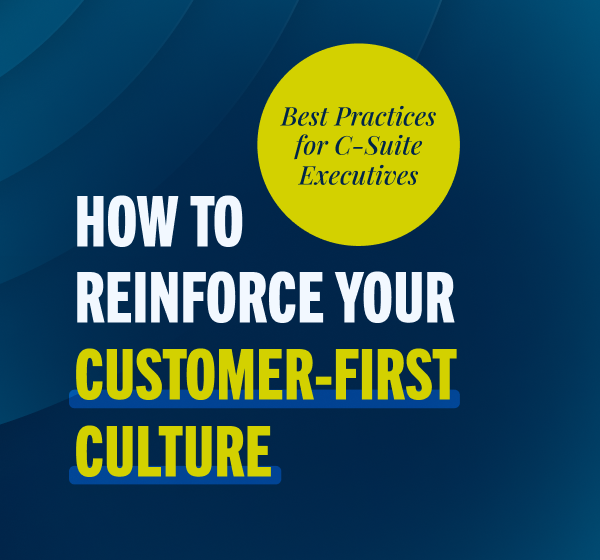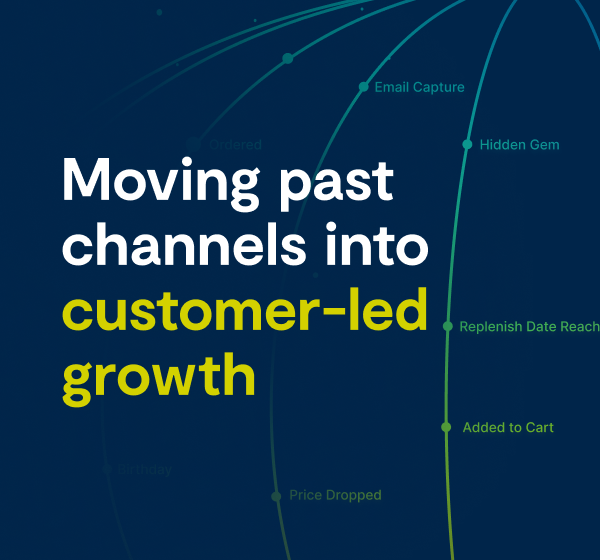

How to Reinforce Your Customer-First Culture: Best Practices for C-Suite Executives
Successful retail leadership is a balancing act.
On one hand, as a C-suite executive, you must meet the demands of the day. Despite inflation, interest rate fluctuations, and global instability, there’s ongoing pressure to drive growth and efficiency. On the other hand, seasoned executives know the importance of balancing immediate sales with the long-term health of their customer file: the primary driver of profitability.
Prioritize the quick sale over customer relationships, and you might be able to generate a strong quarter. But over time, your CAC spikes, retention starts to sink, and your brand reputation goes down with it.
To win in the long run, successful organizations need to instill a customer-first mindset in every employee who walks through the door. Leaders at all levels have to deliver that messaging and pair that vision with supporting actions.
In this article, we look at customer movement through the lens of company culture. We discuss how C-Suite executives can use this retail framework to drive top-line revenue, while also serving as an impactful way to grow and reinforce your customer-first culture.
Customer movement: The ideal framework for a customer-first culture
Does your vision match your programs?
For many retailers, the answer is no. Their company vision speaks about customer focus, but their teams are set up to be hyper focused on channels, with goals aligned to channel-focused metrics. This disconnect creates a siloed structure built on siloed KPIs. Marketers aren’t incentivized to look outside their channel metrics and consider the entire customer experience.
Customer-obsessed retailers, with a view toward long-term success, are taking a different approach. They embrace customer movement as a growth strategy and a cultural tailwind.
Customer movement is a marketing philosophy and framework centered on customers rather than channels. It’s the practice of understanding customer value and using signal-based strategies to move shoppers through the lifecycle.
When put into practice, customer movement can increase a retailer’s third-year customer retention rate from 22% to 59%, on average, according to Bluecore research. Since the lion’s share of profit comes from customers you already know, this retention strategy charts a direct path to increased revenue.
Customer movement also sends a clear message to your team: We’re prioritizing our customers.
By focusing on customers, gathering more information on shoppers, and tracking identification rates, you equip your team with the data and insights they need to truly center the customer.
Simply put, if you’re a retail executive looking to reinforce your customer-first vision, pair it with a customer-first framework. Speak and act with a focus on building long-term relationships.
Shopper identification: Capturing more customer insights
Most retailers don’t know their customers.
According to Bluecore’s 2024 Customer Growth Benchmarks Report, the average retailer across categories is able to identify 21.1% of their shoppers. For many retailers, the number is less than 10%.
Without identification data, your team is left to rely on lengthy personas and expensive third-party research reports. But when it comes down to knowing what an individual cares about, or what they’re looking for, detached information quickly becomes stale.
This begs the question: How can you be a customer-first organization if you don’t know who your customers are?
The short answer is, you can’t. It’s nearly impossible to be a customer-first company if your customers are strangers.
The challenge lies in the data. When shoppers first enter your store — either online or in person — you have a limited window to learn all you can about them. Miss this window and you may miss your chance to turn a shopper into a customer.
Enter shopper identification. With shopper identification, you can capture significantly more information on every shopper. And not just purchase information, but engagement details across their entire online presence.
This information powers customer movement efforts. By capturing shopping “signals” across diverse customer journeys, you can take action or automate based on engagement and purchase behavior — not guesswork. Know when your shoppers view products, search key categories, wishlist items, engage with your digital content, and much more.
Equipped with this data, your marketing team can truly understand customers. They can use shopping signals to move shoppers through the lifecycle, enhancing sales and data collection opportunities. But you can also use this data to expand your customer file and better understand what moves and motivates your best customers.
Measuring success: New metrics for a customer-first culture
Many retailers say they are “customer-first,” but then only track sales and channel metrics.
To reinforce a customer-first culture, it’s time to introduce new metrics. Metrics that support and encourage a focus on the customer. With these metrics, your team can track customer-focused behaviors alongside traditional metrics like conversion rate and CLTV.
Add these metrics to your dashboard:
- Identification rate. This refers to the percentage of site visitors a retailer can identify by an attribute, such as phone number or email address, and tie back to a customer profile. Retailers with low identification rates will struggle to reach more shoppers.
- Loyalty. This refers to the level of commitment customers have to your brand, usually shown by repeat purchases and positive word of mouth. Strong loyalty is driven by consistent quality, personalization, and excellent service.
- Purchase frequency. This shows how often your customers purchase within a year (or other specified time frame). Tracking purchase frequency helps your team gauge customer buying patterns and the effectiveness of retention strategies.
- New buyer penetration. This refers to the percentage of new customers within your total customer base. Strong new buyer penetration signals your team is successfully attracting and converting new customers.
- 2-year and 3-year buyer retention. These track the percentage of customers who continue to make purchases years after their initial purchase. Retention data provides insight into your company’s ability to keep customers active and maintain long-term customer loyalty.
- Reactivation rate. This refers to the percentage of inactive or lapsed customers who return and make a purchase after a period of inactivity. High reactivation rates signal your team is running successful re-engagement strategies.
- AOV growth. This measures your increase in the average order value over the customer lifecycle. It shows whether your tactics successfully upsell, cross-sell, and encourage customers to spend more per transaction.
- Survivorship. This refers to how many new buyers are retained into their second and third years. It specifically tracks the retention of new buyers, signaling the success of your customer nurture strategies.
As an executive, you know metrics matter.
To instill a customer-first mindset, set your team up for success outside the traditional acquire and convert model. Add a layer of relationship building to keep your team focused on what truly matters: your customers.
Customer Movement Assessment
To help retailers unlock customer movement, Bluecore offers a proprietary Customer Movement Assessment — a dive deep into a retailer’s shopper data to find performance gaps and opportunities. Then, we take that information and compare it to our peer index of 200+ companies.
The Customer Movement Assessment includes:
- Full customer file analysis
- Peer benchmarking for identification and retention
- Bottom-up trended forecast
- Campaigns to move customers through the funnel
Retailers who complete a Customer Movement Assessment walk away with a detailed strategy for achieving their growth priorities using the power of customer movement, whether you choose to work with Bluecore or another partner. Get your assessment and join the (customer) movement.





